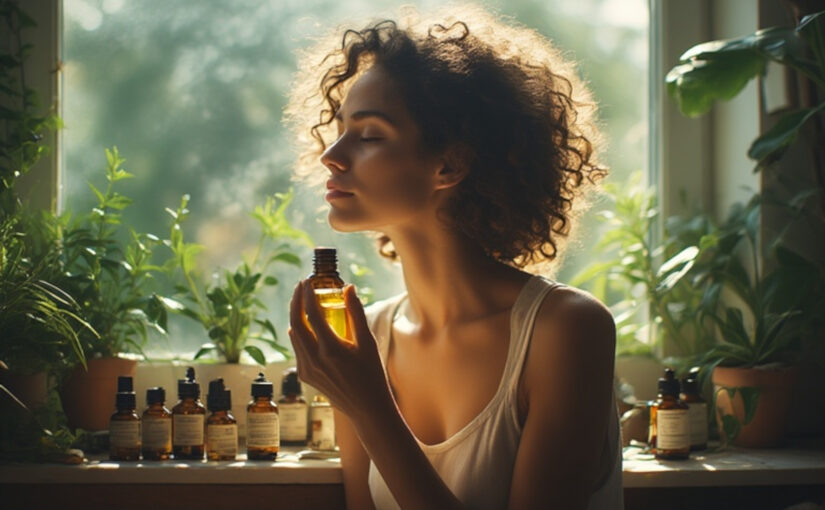Essential oils are indispensable natural products with a vast range of uses across multiple industries. From flavoring foods and beverages to enhancing cosmetics and perfumes, from supporting health and wellness to improving animal nutrition, their applications are as diverse as their aromatic profiles. Their natural antimicrobial, anti-inflammatory, and therapeutic properties make them valuable alternatives or complements to synthetic chemicals and pharmaceuticals. Moreover, their economic importance is underscored by a thriving global trade that continues to expand.
Essential Oils in the Flavor Industry
The flavor industry is the largest consumer of essential oils, utilizing their vibrant essences to enhance a wide array of food and beverage products. Essential oils and their derivatives impart distinctive flavors that enliven everything from non-alcoholic drinks like fruit juice blends, flavored waters, and soft drinks to alcoholic beverages including spirits, cocktails, and flavored liquors. Their use extends to milk-based drinks, yogurts, candies, chocolates, ready meals, baking mixes, meats, sausages, teas, and seasonings such as herbs and spices.
Beyond flavor enhancement, essential oils serve a functional role as natural preservatives, especially in meat products. Their antimicrobial properties help extend shelf life by inhibiting the growth of spoilage microorganisms. This dual function of flavoring and preservation makes essential oils invaluable in food technology.
Even the tobacco industry leverages essential oils to refine and enhance flavor nuances, demonstrating the oils’ broad applicability. The natural origin and complex aromatic profiles of essential oils provide a sensory richness that synthetic additives often cannot replicate.
Applications in Pharmaceuticals and Cosmetics
In pharmaceuticals, essential oils are often used as masking agents to neutralize unpleasant odors of active ingredients in topical formulations. This improves patient compliance by making medicines more pleasant to use.
The cosmetics and fragrance industries heavily rely on essential oils for their aromatic qualities. They are key components in perfumes, ranging from intense fragrances to lighter eau de colognes. Additionally, essential oils enrich skincare, makeup, and personal hygiene products with their scents and potential skin benefits.
Household products such as laundry detergents, fabric softeners, surface cleaners, room sprays, candles, incense, and potpourri also incorporate essential oils. They provide pleasant aromas or mask undesirable smells from other ingredients like fatty acids or plant extracts. It’s notable that most cosmetic products contain fragrance components, unless explicitly labeled “fragrance-free” or “unscented,” and even then, masking fragrances may be present.
Health and Wellness: Therapeutic Uses
Essential oils have a long history in traditional medicine and phytotherapy, and their role in modern aromatherapy continues to grow. They are widely used as complementary or alternative therapies for a variety of health conditions. Some common applications include: Respiratory support: Oils like eucalyptus and peppermint help alleviate symptoms of sinusitis, bronchitis, and congestion.
• Skin conditions: Chamomile, helichrysum, and lavender oils soothe eczema, psoriasis, minor burns, sunburn, and blisters.
• Pain relief: Oils such as peppermint and marjoram can reduce headaches, migraines, and muscle pain.
• Digestive and motion sickness: Ginger and peppermint oils are often used to ease nausea and digestive discomfort.
• Emotional well-being: Bergamot, lavender, and ylang-ylang oils help reduce stress, anxiety, and promote relaxation.
• Food cravings: Some essential oils, including black pepper and grapefruit, are explored for their potential to reduce cravings.
Their antibacterial, antifungal, antiviral, and antiparasitic properties further enhance their value in natural health care. Essential oils often provide therapeutic benefits without the harsh side effects associated with synthetic pharmaceuticals, making them attractive for holistic health approaches.
Skincare, Spa, and Beauty Industries
The skincare and beauty sectors prize essential oils for their soothing, rejuvenating, and beautifying effects. Incorporated into treatments, facial oils, massage blends, and daily routines, essential oils promote relaxation, improve skin tone, and foster overall wellness.
Their versatility extends to DIY and natural product formulations, including toothpaste, deodorants, soaps, eczema creams, lip balms, hand sanitizers, cleaning sprays, baby wipes, and even indulgent treats like chocolate peppermint ice cream. These applications support sustainable and health-conscious lifestyles by reducing reliance on synthetic chemicals.
Animal Nutrition and Agriculture
Essential oils are increasingly recognized as valuable natural additives in animal nutrition. They improve feed palatability and act as natural preservatives. Oils rich in carvacrol, such as oregano and thyme, exhibit potent antimicrobial effects, which can help reduce the use of antibiotic growth promoters in livestock. This shift supports more natural and sustainable animal health practices.
Economic Significance and Global Trade
The global essential oils market is a multibillion-dollar industry, reflecting the widespread demand and diverse applications of these plant extracts. In 2024, the market value was estimated at around $43 billion, marking a significant growth from previous years.
Among the most traded essential oils, orange oil leads with approximately 22% of market revenue, followed by eucalyptus, peppermint, cornmint, tea tree, lemon, lime, rosemary, frankincense, and sandalwood. These oils are prized for their versatility and widespread use across industries.
The price of essential oils varies greatly depending on factors like plant species, cultivation complexity, harvesting methods, and oil yield. For example, orris root oil is the most expensive, costing upwards of $20,000 per ounce due to its labor-intensive production process. Other premium oils include Bulgarian rose, champaca, jasmine sambac, oudh (agarwood), tuberose, immortelle, and frangipani, each commanding high prices for their rarity and intricate extraction methods.
If your heart finds joy and inspiration here, consider supporting the work that keeps these stories blooming. Your donation, no matter the size, helps sustain authentic research, creative writing, and the spirit of sharing that connects us all.
